Featured Image Archive
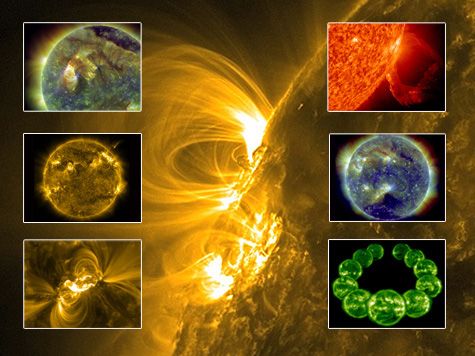
- 04.21.2011
-
April 21, 2011 marks the one-year anniversary of the Solar Dynamics Observatory (SDO) "First Light" press conference. The mission has returned unprecedented images of solar flares, eruptions of
prominences, and the early stages of coronal mass ejections.
Source: sdo.gsfc.nasa.gov/gallery/main.php
First Light Anniversary
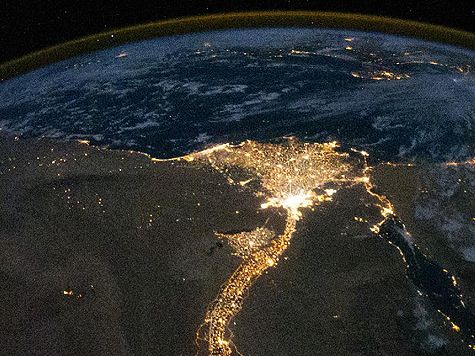
- 04.20.2011
-
The Nile River and its delta look like a brilliant, long-stemmed flower in this photograph of the southeastern Mediterranean Sea, as seen from the International Space Station.
Source: www.nasa.gov/multimedia/imagegallery/image_feature_1923.html
Nile At Night
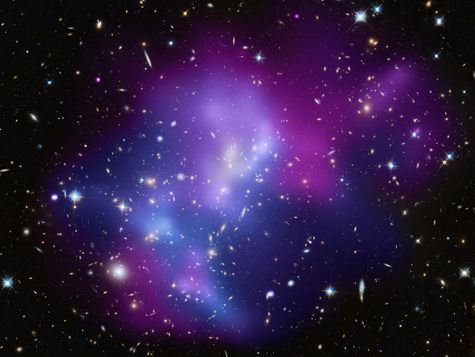
- 04.21.2011
-
This image shows a massive galaxy cluster called MACS J0717.5+3745. It consists of four smaller galaxy clusters colliding. Gas (in blue and red) is revealed in an image from NASA's Chandra X-ray
Observatory. Galaxies appear in an optical image from NASA's Hubble Space Telescope.
Source: hubblesite.org/newscenter/archive/releases/galaxy/2009/17/image
Galaxy Cluster Mash-Up
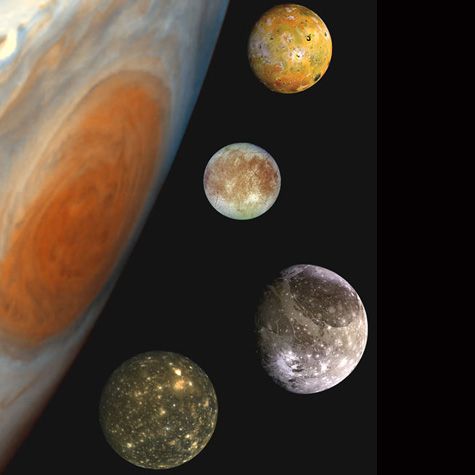
- 04.21.2011
-
This "family portrait," a composite of the Jovian system, includes the edge of Jupiter with its Great Red Spot, and Jupiter's four largest moons, known as the Galilean satellites. From top to bottom,
the moons shown are Io, Europa, Ganymede and Callisto.
Source: http://www.nasa.gov/multimedia/imagegallery/image_feature_592.html
Jupiter Family Portrait
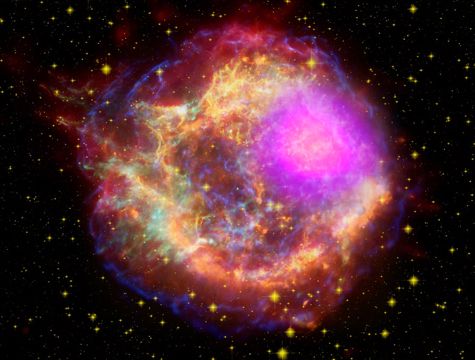
- 04.11.2011
-
This image of the Cassiopeia A supernova remnant combines multi-wavelength data from four space observatories and one on the ground. Wavelengths include gamma rays, X-rays, visible and infrared light
and radio waves.
Source: www.nasa.gov/mission_pages/GLAST/news/cosmic-rays-source.html
Multi-Wavelength Cosmos
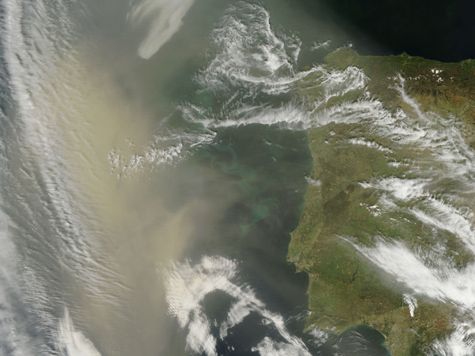
- 04.14.2011
-
A thick plume of dust hangs over the Atlantic Ocean off the coast of Portugal in this image from the MODIS instrument on NASA's Terra satellite on April 6, 2011.
Source: http://earthobservatory.nasa.gov/IOTD/view.php?id=49987
Dusty Days
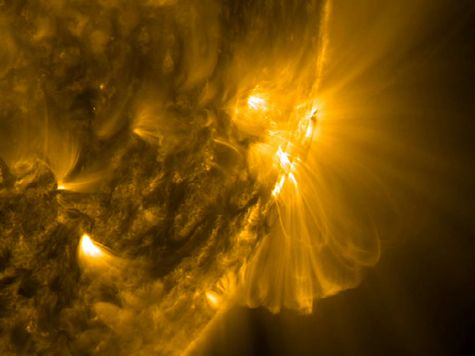
- 04.15.2011
-
Cascades of spiraling magnetic loops, observed in extreme ultraviolet light by NASA's Solar Dynamics Observatory on April 3-5, 2011, danced and twisted above an active region on the sun.
Source: sdo.gsfc.nasa.gov/gallery/potw.php?v=item&id=47
Spiraling Sun
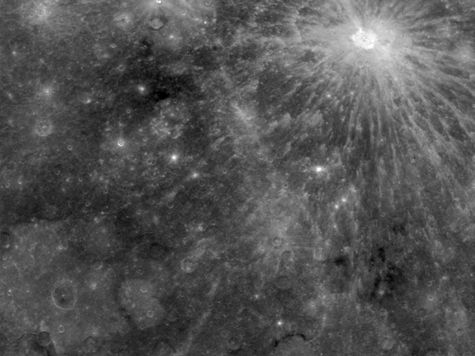
- 04.11.2011
-
First seen in Mariner 10 images, the bright-rayed crater Kuiper (62 km in diameter) was imaged on April 10 by the MESSENGER spacecraft, now in orbit around Mercury.
Source: messenger.jhuapl.edu/gallery/sciencePhotos/image.php?gallery_id=2&image_id=468
Kuiper's Crater
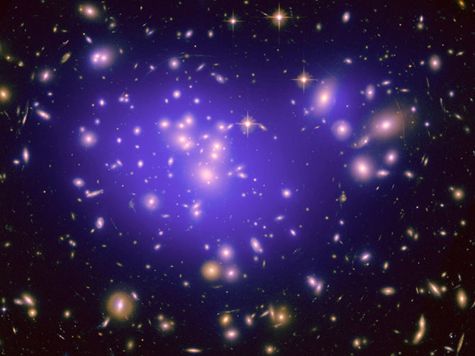
- 04.13.2011
-
In the galaxy cluster Abell 1689, gravity warps light from background galaxies into arcs.
Source: www.nasa.gov/mission_pages/hubble/multimedia/hubble20100819a.html
Galactic Lensing
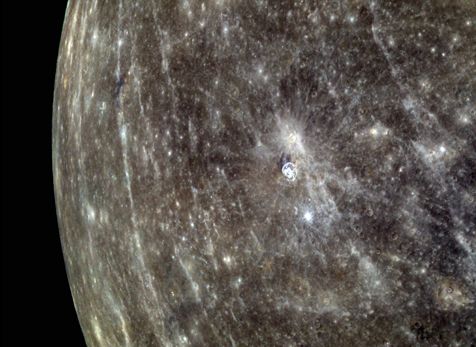
- 04.01.2011
-
The MESSENGER spacecraft imaged Mercury in color soon after achieving its historic orbit of the solar system's first planet.
Source: messenger.jhuapl.edu/gallery/sciencePhotos/image.php?page=1&gallery_id=2&image_id=446
Live! In color
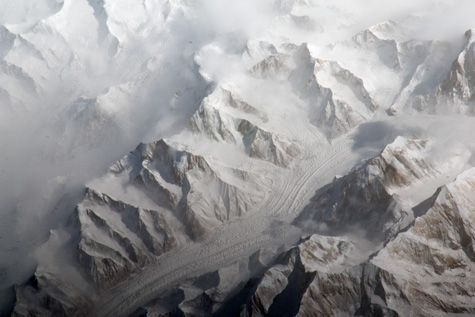
- 04.04.2011
-
The Tien Shan ('celestial mountains' in Chinese) is one of the longest continuous mountain ranges in the world, extending approximately 2,500 kilometers (1,550 miles) across Central Asia.
Source: earthobservatory.nasa.gov/IOTD/view.php?id=49857
Range of Heaven
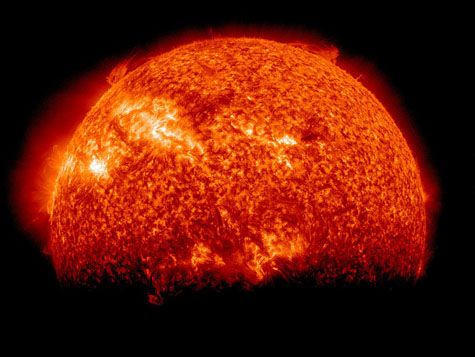
- 04.06.2011
-
NASA's Solar Dynamics Observatory imaged the ragged shadow edge of Earth eclipsing the sun. Earth's shadow has a variegated edge due to its atmosphere, which blocks the sun light to different degrees depending on its density.
Source: www.flickr.com/photos/gsfc/5576582865/
Space Eclipse
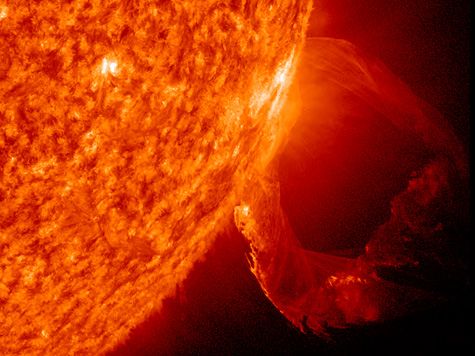
- 03.23.2011
-
NASA's Solar Dynamics Observatory captured this nicely rounded prominence eruption on March 19, 2011, as the disturbance erupted into space with a distinct twisting motion.
Source: http://sdo.gsfc.nasa.gov/gallery/potw.php?v=item&id=46
Well Rounded
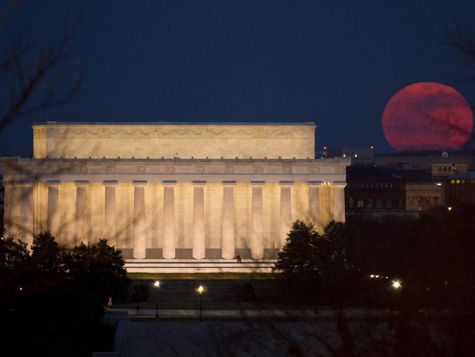
- 03.24.2011
-
The full moon is seen as it rises near the Lincoln Memorial, Saturday, March 19, 2011, in Washington. The full moon tonight is called a super perigee moon since it is at its closest to Earth in
2011.
Source: www.nasa.gov/multimedia/imagegallery/image_feature_1900.html
Super Perigee Moon
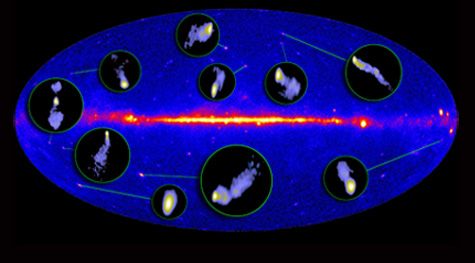
- 03.29.2011
-
The radio jets of several active galaxies mapped by the Very Long Baseline Array are inset into the Fermi Gamma-ray Space Telescope's map of the gamma-ray sky.
Source: www.nasa.gov/mission_pages/GLAST/news/radio_telescope.html
Gamma-Ray Montage
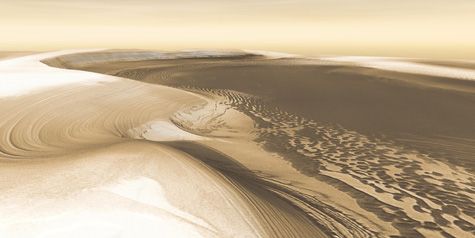
- 03.24.2011
-
In this long, flat-floored valley that cuts deep into Mars' north polar icecap, the walls rise about 1,400 meters (4,600 feet). Where the edge of the ice cap has retreated, sheets of sand are emerging
that accumulated during earlier ice-free climatic cycles.
Source: photojournal.jpl.nasa.gov/catalog/?IDNumber=PIA13659
Chasma Boreale
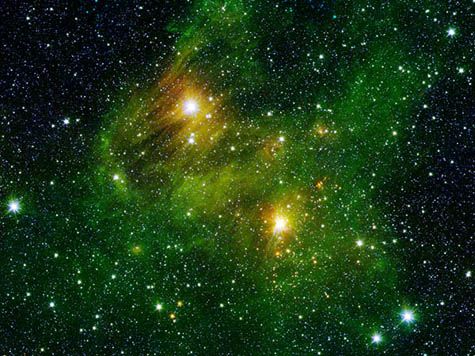
- 03.14.2011
-
This infrared image shows an outflow of gas from a new star. The green tinge indicates the presence of organic molecules called polycyclic aromatic hydrocarbons.
Source: www.spitzer.caltech.edu/images/3224-sig10-14_A-Shocking-Outflow
Stellar Outflow
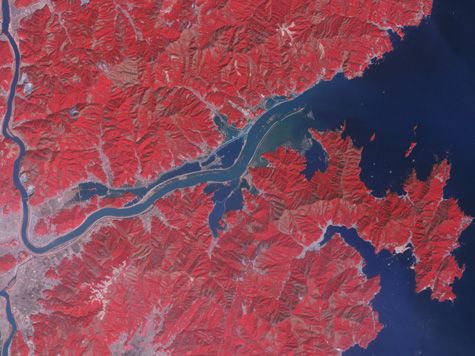
- 03.16.2011
-
In the wake of the magnitude 9.0 earthquake and resulting tsunami that struck northeastern Japan on March 13, 2011, ocean waters flooded croplands and settlements lining the Kitakami River.
Source: earthobservatory.nasa.gov/IOTD/view.php?id=49672
Tsunami Aftermath
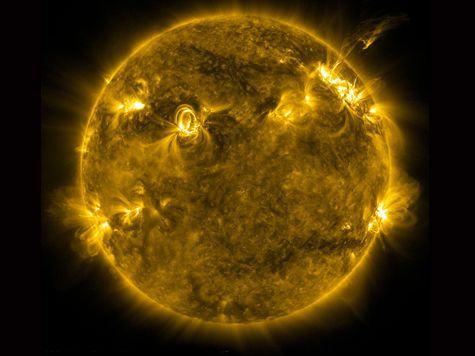
- 03.15.2011
-
With numerous active regions populating the sun's surface, it is no surprise that March 6-8 NASA's Solar Dynamics Observatory saw flares and coronal mass ejections popping off in many directions.
Source: sdo.gsfc.nasa.gov/gallery/potw.php?v=item&id=45
Popping Off
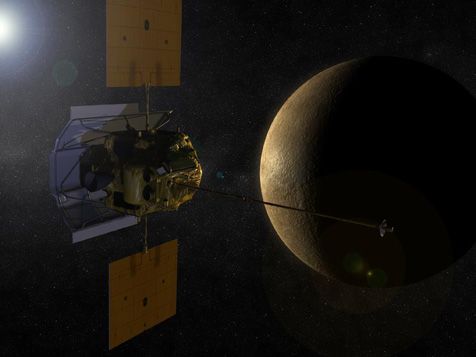
- 03.16.2011
-
After years of fly-bys, NASA's MESSENGER spacecraft is going into orbit around the first planet from the sun to continue its spectacularly successful voyage of discovery.
Source: www.nasa.gov/mission_pages/messenger/media/MESSENGERPoisedInsertion.html
Making Orbit
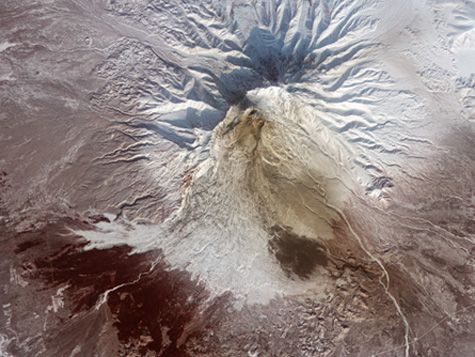
- 03.04.2011
-
This false-color satellite image from the ASTER instrument aboard NASA's Terra satellite shows the
dark remnants of avalanches of superheated ash, gas, and rock--called pyroclastic flows--on the slopes
of Shiveluch Volcano on Russia's Kamchatka Peninsula.
Source: earthobservatory.nasa.gov/IOTD/view.php?id=49468
Let it Flow
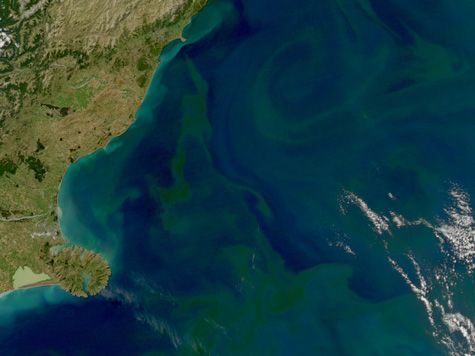
- 03.07.2011
-
In an image captured in February 2011 by the MODIS instrument on NASA's Aqua satellite, swirls of turquoise and green map out a large phytoplankton bloom along the shores of New Zealand's
South
Island.
Source: earthobservatory.nasa.gov/IOTD/view.php?id=49459
Turquoise Swirls
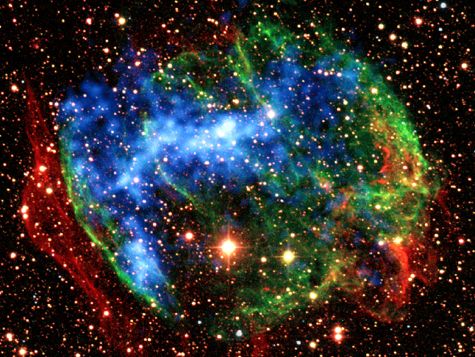
- 03.08.2011
-
This composite view of the supernova remnant W49B combines infrared images from the ground (red, green) with X-ray data from NASA's Chandra X-Ray Observatory (blue).
Source: http://www.nasa.gov/mission_pages/astro-e2/news/fossil-fireballs.html
Color Combo
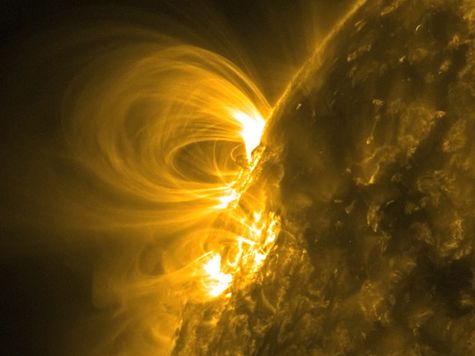
- 03.03.2011
-
As an active region on the sun's surface rotated into view, Solar Dynamics Observatory captured this profile of the constantly changing magnetic field lines arcing high above it, February 23-27,
2011.
Source: sdo.gsfc.nasa.gov/gallery/potw.php?v=item&id=44
Lots of Loops
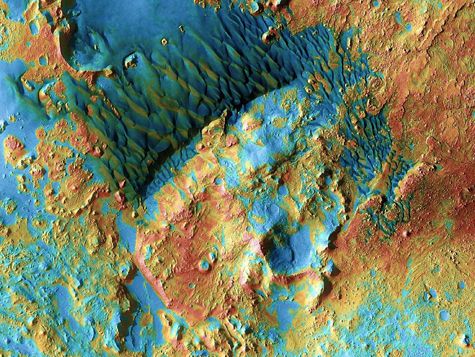
- 03.10.2011
-
Sand dunes shaped like blue-black flames lie next to a central hill within an unnamed 120-kilometer-wide crater in eastern Arabia on Mars.
Source: www.nasa.gov/mission_pages/odyssey/images/pia13658.html
Flaming Arabia Dunes
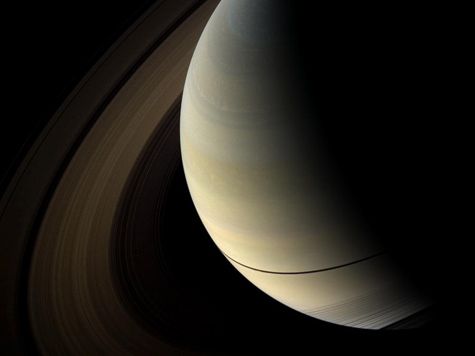
- 02.22.2011
-
The shadows of Saturn's rings cast onto the planet appear as a thin band at the equator in this image captured by the Cassini orbiter in August 2009.
Source: photojournal.jpl.nasa.gov/catalog/PIA12708
Razor's Edge
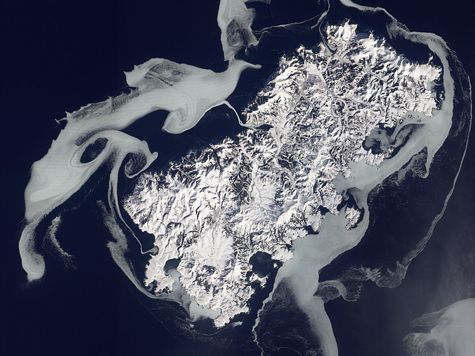
- 02.25.2011
-
NASA's EO-1 satellite captured this image of Ostrov Shikotan, a volcanic island at the southern end of the Kuril chain. Sea ice swirls shapes of ghostly blue-gray around the island.
Source: earthobservatory.nasa.gov/IOTD/view.php?id=49344
Icy Waters
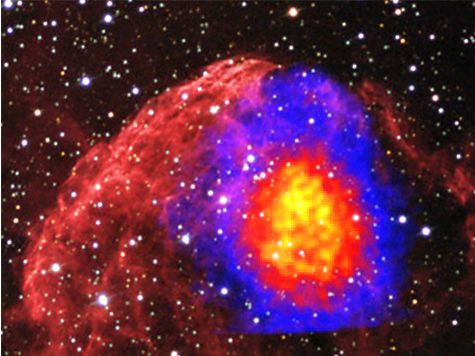
- 02.25.2011
-
In a supernova remnant known as the Jellyfish Nebula, the Suzaku spacecraft detected X-rays
from fully ionized silicon and sulfur (blue and yellow region). The ions are the imprint of extreme heating
that occurred after the star's explosion.
Source: www.nasa.gov/mission_pages/astro-e2/news/fossil-fireballs.html
Cosmic Jellyfish
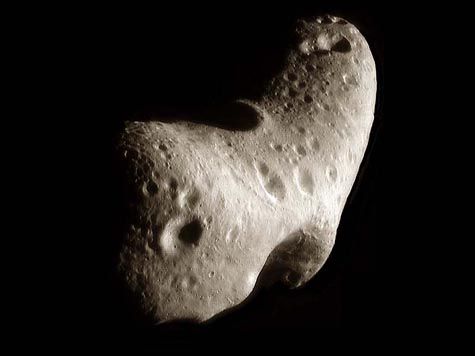
- 02.25.2011
-
High-resolution surface images and measurements made by NEAR's Laser Rangefinder have been combined into the above visualization based on the derived 3D model of the tumbling space rock.
Source: apod.nasa.gov/apod/ap090607.html
Space Rock
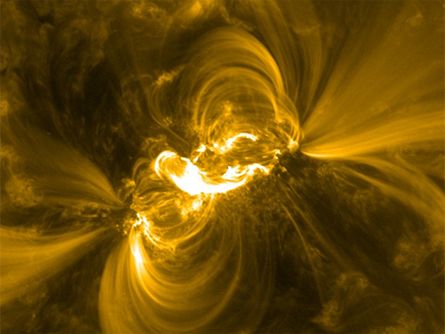
- 02.15.2011
-
A powerful flare burst on the sun, peaking on February 13. NASA's Solar Dynamics Observatory captured this image.
Source: sdoisgo.blogspot.com/2011/02/m66-solar-flare-largest-of-this-solar.html
Flare Up
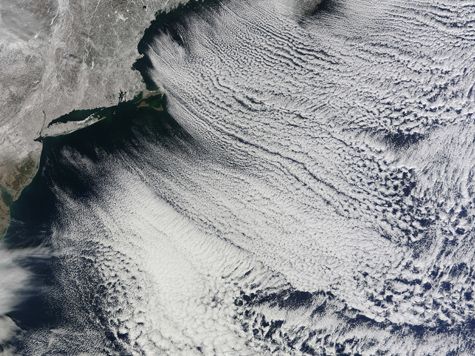
- 02.18.2011
-
On January 24, 2011, lines of clouds stretch from northwest to southeast over the North Atlantic, while the relatively cloudless skies over land afford a peek at the snow that blanketed the Northeast
just a few days earlier.
Source: earthobservatory.nasa.gov/IOTD/view.php?id=49254
Winter Cloud Streets
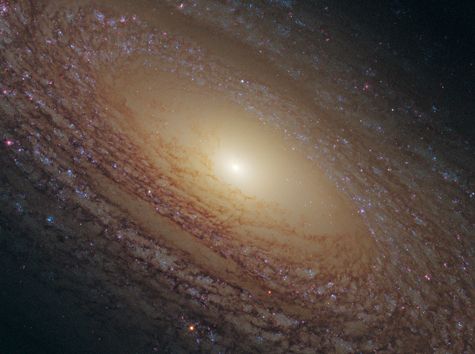
- 02.17.2011
-
This image of galaxy NGC 2841 was captured by the Hubble Space Telescope's newest instrument, the Wide Field Camera 3.
Source: www.spacetelescope.org/news/heic1104
Fluffy Spiral
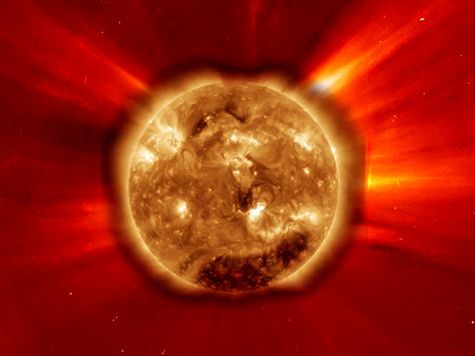
- 02.21.2011
-
Superimposing data from two spacecraft, SDO and SOHO, made it possible to observe the X2 flare of Feb. 15, 2011, as well as the faint edge of a "halo" coronal mass ejection that immediately raced outward toward Earth
Source: sdo.gsfc.nasa.gov/gallery/potw.php?v=item&id=42
Two Views
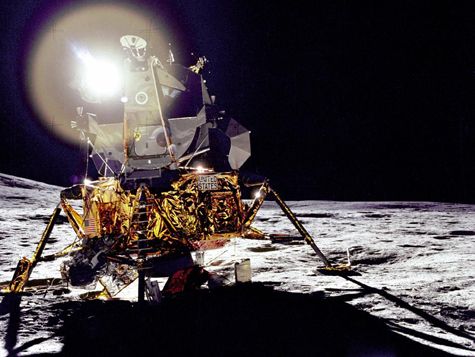
- 02.16.2011
-
This view of Antares, the Apollo 14 Lunar Module as it sat on the moon's Fra Mauro Highlands, reflects a jewel-like circular flare caused by the brilliant sun.
Source: www.nasa.gov/multimedia/imagegallery/image_feature_1853.html
The Jewel of the Sun
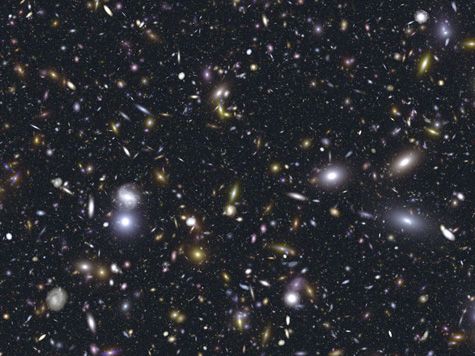
- 02.08.2011
-
This visualization, peering deep into space at distant galaxies, simulates what the Webb Telescope may see when it begins operations in space and captures a "deep field"
image of the universe.
Source: www.nasa.gov/topics/technology/features/webb-mcdr.html
Simulated Seeing
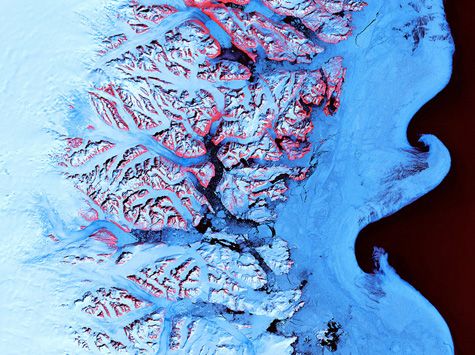
- 02.10.2011
-
Along the southeastern coast of Greenland, an intricate network of fjords funnels glacial ice to the Atlantic Ocean.
Source: www.flickr.com/photos/gsfc/5182692798/in/set-72157625402909346
Ice Waves
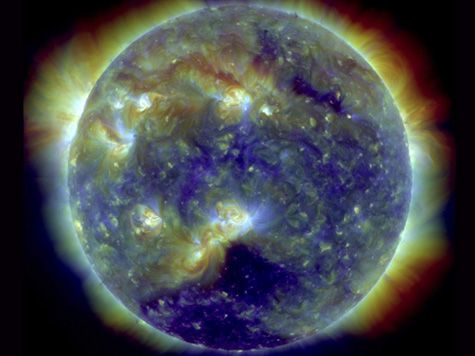
- 02.14.2011
-
A composite Solar Dynamics Observatory image from Feb. 11, 2011, exactly one year after the spacecraft's launch. The image combines three wavelengths of extreme ultraviolet light.
Source: www.nasa.gov/mission_pages/sdo/news/sdo-1year.html
Extreme Imaging
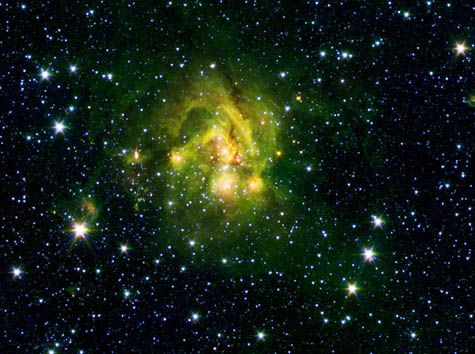
- 02.10.2011
-
Material rockets outward from a new star in this image based on from data collected by the Spitzer Space Telescope and the Two Micron All Sky Survey.
Source: www.spitzer.caltech.edu/images/3224-sig10-14_A-Shocking-Outflow
Gas Blaster
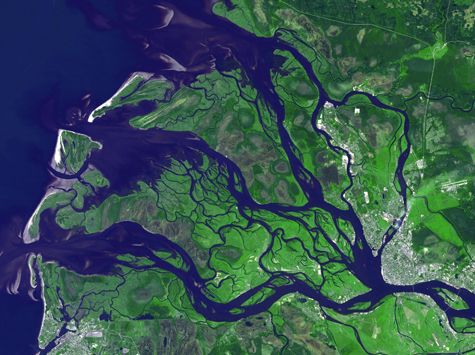
- 01.31.2011
-
Arkhangelsk ("Archangel"in English) is a city and the administrative capital of Archangelsk Oblast, Russia. It is situated on both banks of the Dvina River near where it flows into the White Sea.
Source: asterweb.jpl.nasa.gov/gallery-detail.asp?name=Arkhangelsk
Archangel Flow
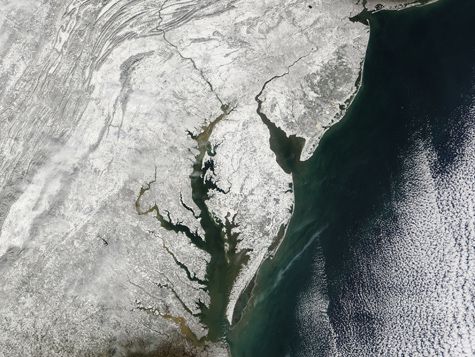
- 02.02.2011
-
Nicknamed "snowpocalypse," an exceptionally severe winter storm dropped several feet of snow around the Washington, D.C., area and the surrounding region. NASA's Terra satellite captured this
true-color image on February 7, 2010.
Source: earthobservatory.nasa.gov/IOTD/view.php?id=42568&src=eoa-iotd
Snowpocalypse Memories
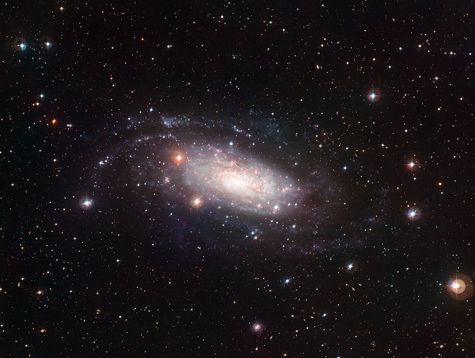
- 02.02.2011
-
The bright galaxy NGC 3621 was captured here using the Wide Field Imager on the 2.2-meter telescope at the European Southern Observatory's La Silla Observatory in Chile.
Source: www.eso.org/public/news/eso1104/
Classic Spiral
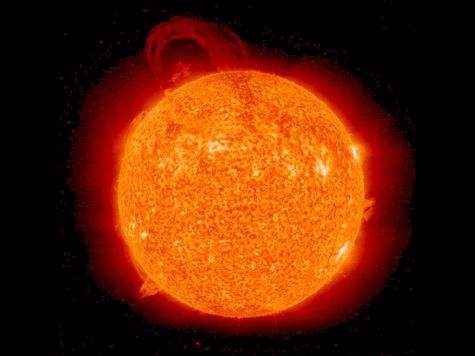
- 02.07.2011
-
The STEREO (Ahead) spacecraft caught this spectacular eruptive prominence in extreme UV light as it blasted away from the sun April 12-13, 2010.
Source: www.nasa.gov/mission_pages/stereo/multimedia/Huge-Eruptive-Prominence.html
Prominent Feature
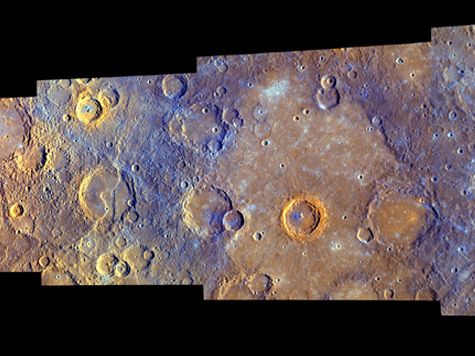
- 02.04.2011
-
When imaged through 11 different color filters by the MESSENGER spacecraft, Mercury's surface blooms in color and vivid detail.
Source: http://photojournal.jpl.nasa.gov/catalog/PIA13823
Mercury in Color
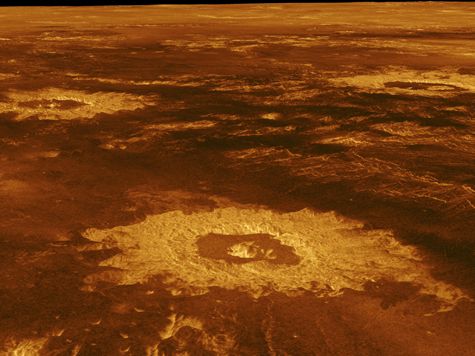
- 01.24.2011
-
Three impact craters are displayed in this false-color perspective view of the surface of Venus, as imaged by the Magellan spacecraft.
Source: photojournal.jpl.nasa.gov/catalog/PIA00103
Crater Trio
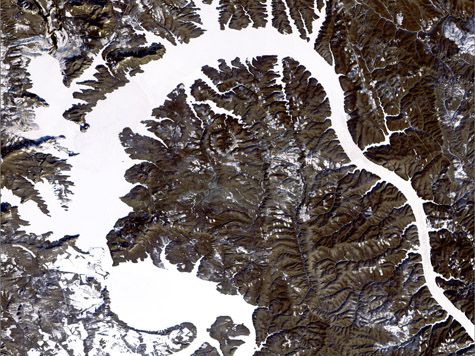
- 01.25.2011
-
Nicknamed "Dragon Lake," this body of water is formed by the Bratskove Reservoir, built along the Angara River in southern Siberia.
Source: earthasart.gsfc.nasa.gov/dragon.html
Frozen Dragon
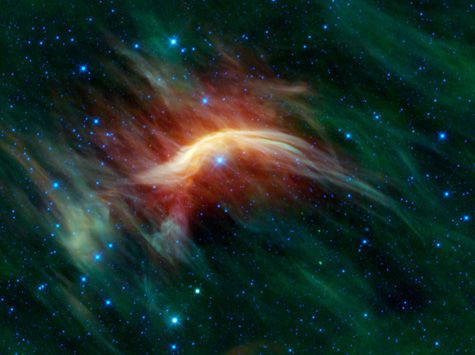
- 01.26.2011
-
The WISE Telescope took this infrared portrait of Zeta Ophiuchi, a massive, hot, bright blue star, plowing through a large cloud of interstellar dust and gas.
Source: photojournal.jpl.nasa.gov/catalog/PIA13455
Star Plow
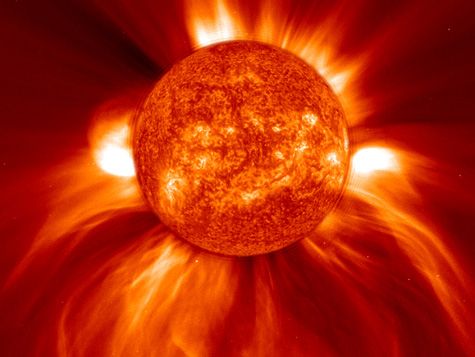
- 01.27.2011
-
This SOHO spacecraft image from 2002 shows a widely spreading coronal mass ejection (CME) as it blasts more than a billion tons of matter out into space at millions of kilometers per hour.
Source: sohowww.nascom.nasa.gov/gallery/images/suncombo1.html
Blasting CME
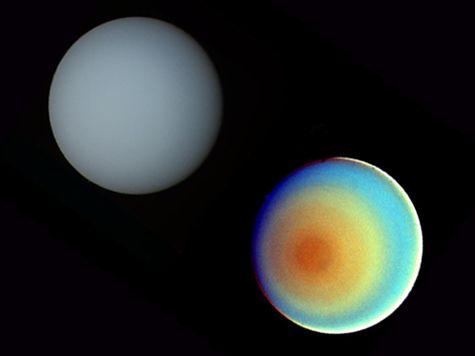
- 01.28.2011
-
These two pictures of Uranus -- one in true color (left) and the other in false color -- were compiled from images returned Jan. 17, 1986 by Voyager 2.
Source: www.nasa.gov/mission_pages/voyager/pia00032.html
Two Views
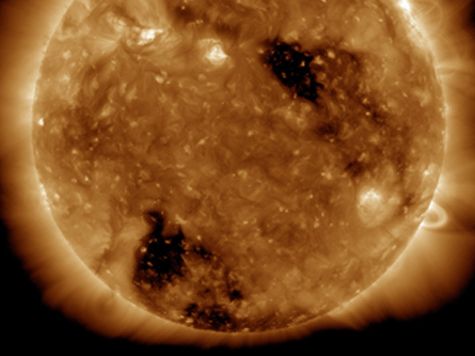
- 01.17.2011
-
Two dark coronal "holes" -- areas where the solar surface is cooler and less dense than average -- blossomed on the sun as the Solar Dynamics Observatory watched.
Source: sdo.gsfc.nasa.gov/gallery/potw.php?v=item&id=37
Holes in the Sun
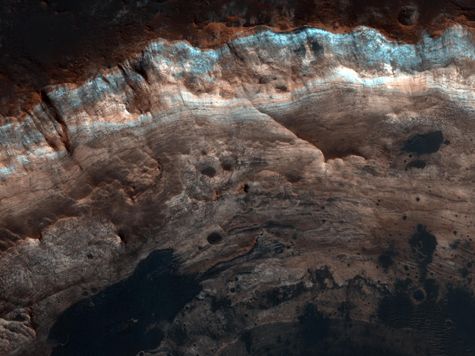
- 01.17.2011
-
Many layers of bedrock are exposed at the edge of a meteorite impact crater near Mawrth Vallis on Mars, opening a window into the planet's geological history.
Source: photojournal.jpl.nasa.gov/catalog/PIA13726
Impact Edge
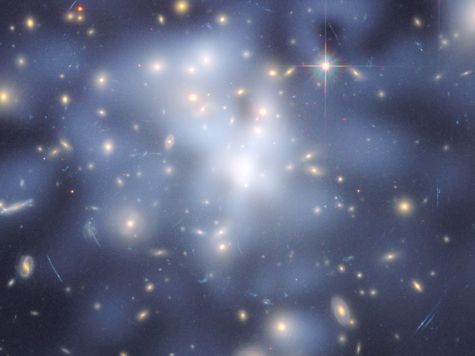
- 01.05.2011
-
This visualization based on NASA Hubble Space Telescope observations maps the distribution of dark matter in the center of the giant galaxy cluster Abell 1689, containing about 1,000 galaxies and
trillions of stars.
Source: hubblesite.org/newscenter/archive/releases/2010/37/image/a/
Dark Matter Map
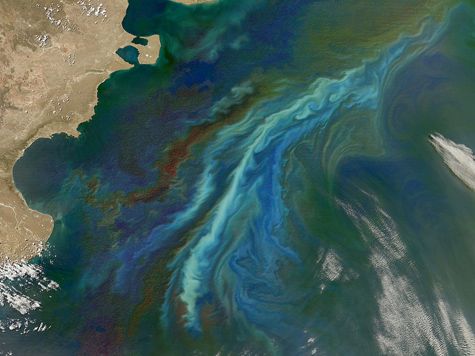
- 01.10.2011
-
Off the coast of Argentina, converging ocean currents stir up a colorful brew of floating nutrients and microscopic plant life.
Source: www.flickr.com/photos/gsfc/5319841331
Strange Brew
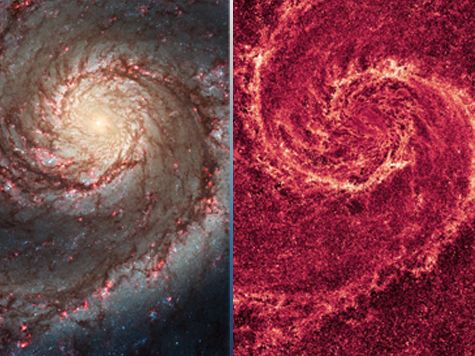
- 01.13.2011
-
These images by NASA's Hubble Space Telescope show off two dramatically different face-on views of the spiral Whirlpool Galaxy. The image at left highlights the galaxy's arms, star-forming regions, and
star clusters; at right, its skeletal dust structures.
Source: hubblesite.org/newscenter/archive/releases/2011/03
Two-Faced Galaxy
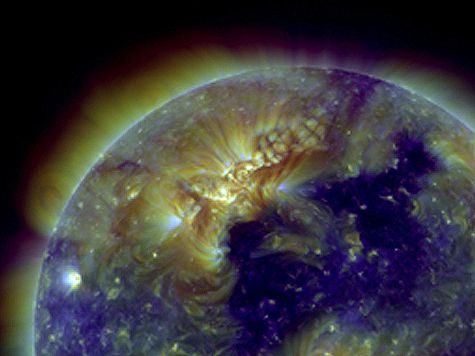
- 01.12.2011
-
An elongated, dark solar filament appears reddish-purple when imaged in three wavelengths of extreme ultraviolet light, and stretches one-third of the way around the sun.
Source: sdo.gsfc.nasa.gov/gallery/potw.php?v=item&id=36
Tri-Color Sun
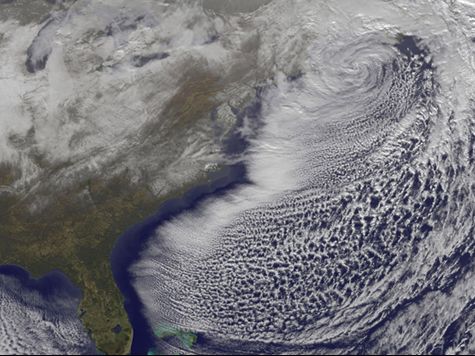
- 12.28.2010
-
The GOES-13 satellite captured this image of the powerful low pressure system that brought snows from Georgia to Maine along the U.S. East Coast.
Source: www.nasa.gov/centers/goddard/news/features/2010/goes13-snow.html
Northeast Snowblower
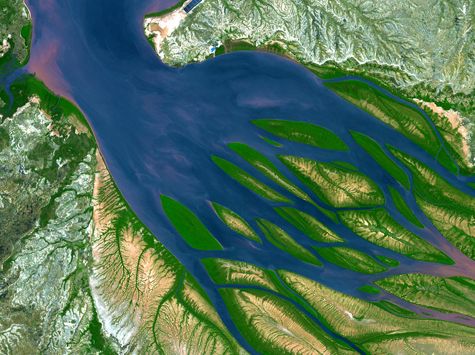
- 12.28.2010
-
The Terra satellite's ASTER instrument captured this simulated natural color image of Bombetoka Bay in northwestern Madagascar, a prolific coffee-growing region.
Source: asterweb.jpl.nasa.gov/gallery-detail.asp?name=Bombetoka
Bountiful Bombetoka
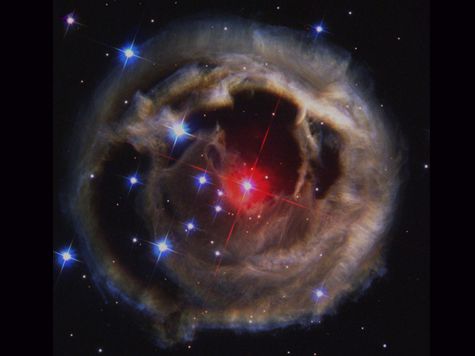
- 12.28.2010
-
Like some cosmic van Gogh painting, a shell of cast off gas expands around the outbursting star V838 Monocerotis, captured on February 8, 2004, by the Hubble Space Telescope's Advanced Camera for Surveys.
Source: hubblesite.org/newscenter/archive/releases/2004/10
Star Imitates Art
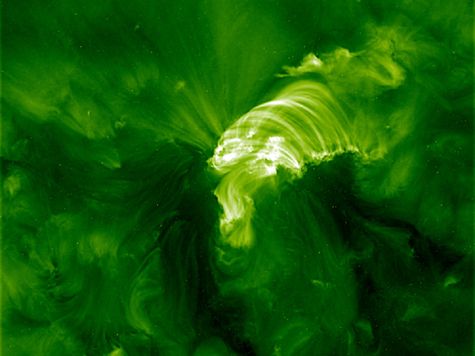
- 12.28.2010
-
Solar Dynamics Observatory's Atmospheric Imaging Assembly captured this portrait after a solar eruption and a flare. The dark regions show the site of material cast out by the eruption.
Source: sdo.gsfc.nasa.gov/gallery/main.php?v=item&id=7
Loops & Flares
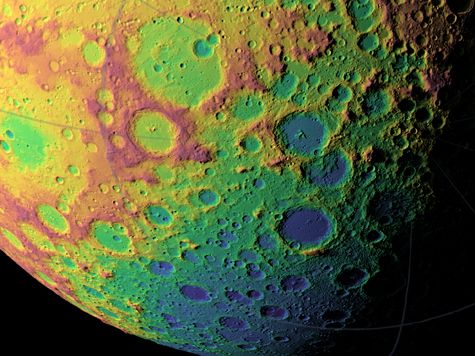
- 12.28.2010
-
The latest topographic map of the moon based on Lunar Orbiter Laser Altimeter (LOLA) data reveals the deep, cold craters of the southern polar region in sharp relief, with the deepest areas indicated in blue.
Source: www.nasa.gov/mission_pages/LRO/news/lola-topo-map.html
Deep Blue
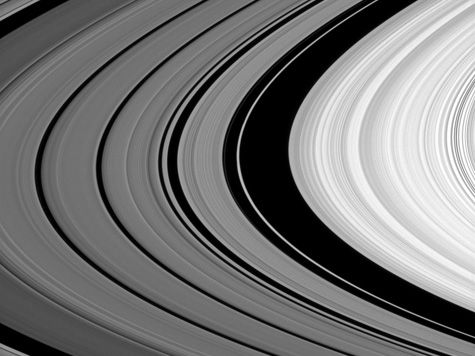
- 12.21.2010
- The Cassini orbiter snapped this striking portrait of the famous Cassini Division in Saturn's ring system on September 3, 2010.
- Source: www.ciclops.org/view/6540/Detailing_the_Division
Division Details
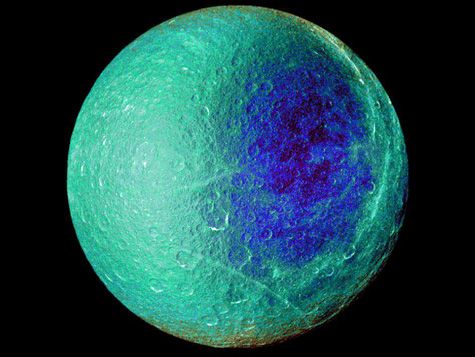
- 12.21.2010
- This false-color image highlights the dramatic difference in tone between the two hemispheres of Saturn's moon Rhea. The lighter (left) hemisphere faces in the direction of Rhea's orbital motion
around Saturn.
- Source: www.nasa.gov/mission_pages/cassini/multimedia/pia12808.html
Two-faced Moon
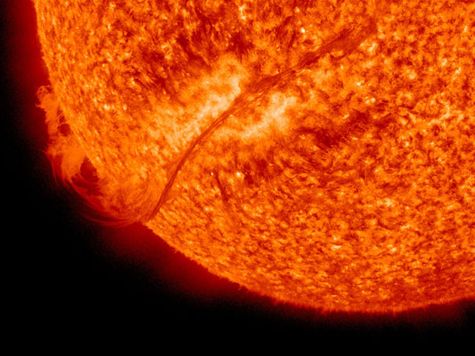
- 12.05.2010
- A huge magnetic filament snakes around the sun's southeast limb. NASA's Solar Dynamics Observatory took
the above picture during the early hours of Dec 6, 2010.
- Source: www.nasa.gov/mission_pages/sunearth/news/News120610-filamentsnake.html
Plasma Snake
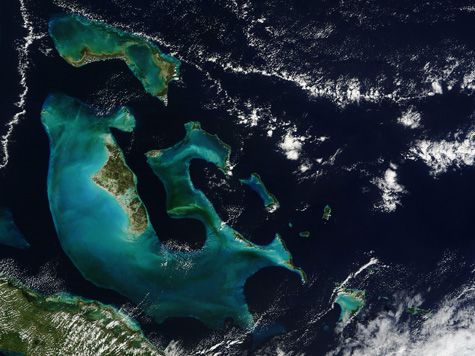
- 12.13.2010
- Waters around the Bahama Islands appear to glow due to reflections from shallow platforms of carbonate
rock on the seafloor.
- Source: modis.gsfc.nasa.gov/gallery/individual.php?db_date=2010-11-20
Bahama Blue
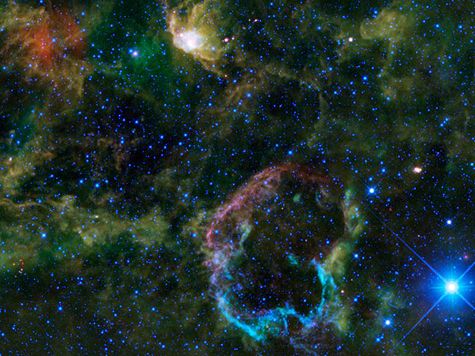
- 12.15.2010
- This oddly colorful cloud of gas and dust is the supernova remnant IC 443, imaged by NASA's Wide-field
Infrared Survey Explorer (WISE). It's also known as the Jellyfish Nebula.
- Source: www.nasa.gov/mission_pages/WISE/multimedia/gallery/pia13449.html
Infrared Explosion
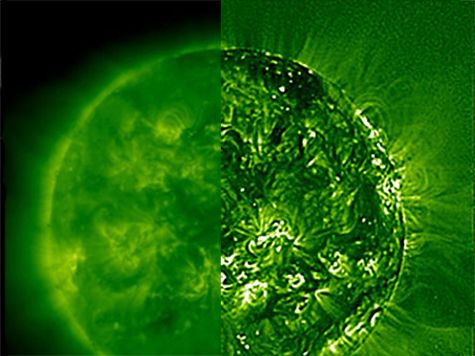
- 12.15.2010
- The left half of this mosaic, based on a SOHO satellite image, is in extreme ultraviolet. In the right
half, the ultraviolet is transformed by "wavelet processing" to accentuate detailed features.
- Source: sohowww.nascom.nasa.gov/pickoftheweek/old/02dec2006
Half and Half
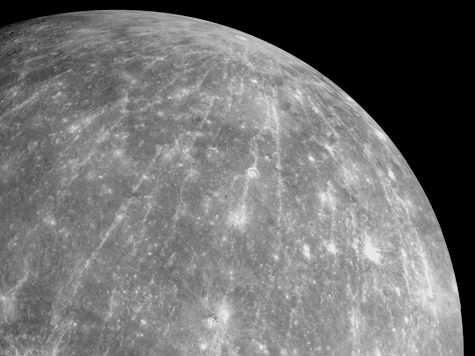
- 12.15.2010
- In a mosaic of images by the Narrow Angle Camera aboard the MESSENGER spacecraft, rays fringe
Mercury's Hokusai Crater out to distances of more than 600 miles.
- Source: http://messenger.jhuapl.edu/gallery/sciencePhotos/image.php?gallery_id=2&image_id=396
Rambling Rays
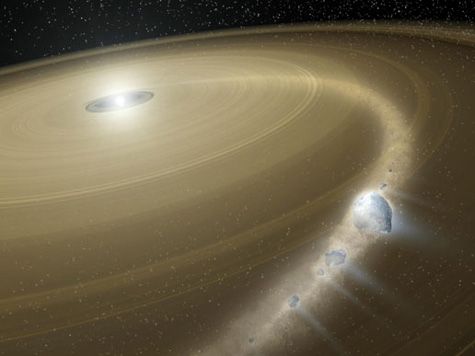
- 11.30.2010
- This artist's concept illustrates a comet being torn to shreds around G29-3, a so-called dead star, or white dwarf.
- Source: www.nasa.gov/multimedia/imagegallery/image_feature_499.html
A Comet Bites the Dust
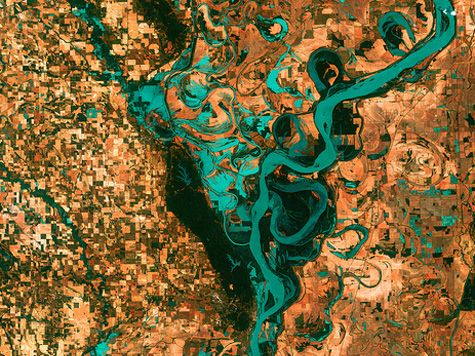
- 12.02.2010
- The small, blocky shapes of towns, fields, and pastures surround the graceful swirls and whorls of the Mississippi River.
- Source: www.flickr.com/photos/gsfc/5182095595/
Meandering Mississippi

- 12.05.2010
- A colony of hot young stars is stirring up the cosmic scene in this dramatic image from NASA's Spitzer Space Telescope.
- Source: www.spitzer.caltech.edu/images/3022-sig10-004-Orion-s-Dreamy-Stars
Star Power
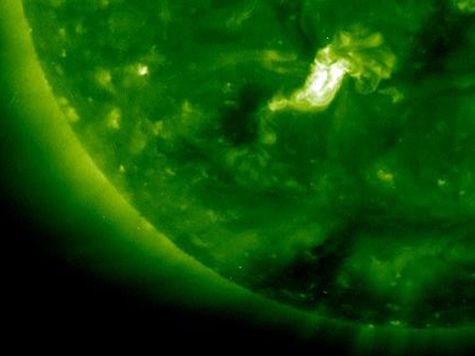
- 12.02.2010
- For 15 years, the Solar and Heliospheric Observatory (SOHO) has kept a wary eye on the sun, including eruptions on the solar surface known as coronal mass ejections (CMEs). One of the first coronal
mass ejection-associated waves observed by SOHO occurred on April 7, 1997.
- Source: www.nasa.gov/mission_pages/soho/15-years.html
Blast from the Past
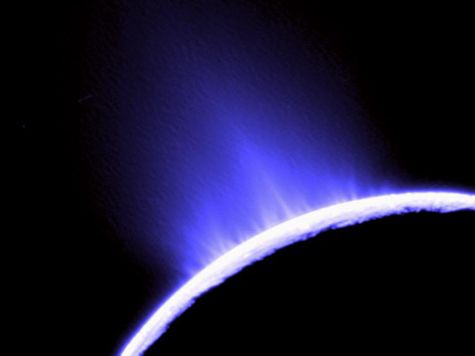
- 12.03.2010
- In a false-color image, jets on the surface of Saturn's moon Enceladus spew ice particles, water vapor, and trace organic compounds.
- Source: http://photojournal.jpl.nasa.gov/catalog/PIA08386
Jet Blue
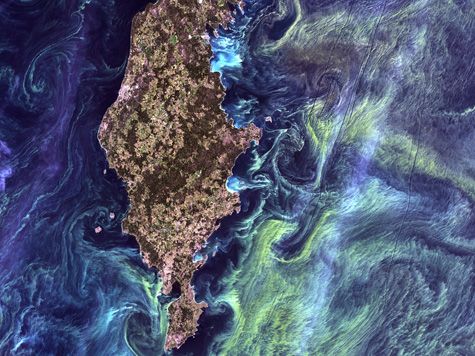
- 11.21.2010
- In the style of Van Gogh's painting "Starry Night," massive congregations of greenish phytoplankton swirl in the dark water around Gotland, a Swedish island in the Baltic Sea. Source: http://www.flickr.com/photos/gsfc/5182695972
Van Gogh from Space
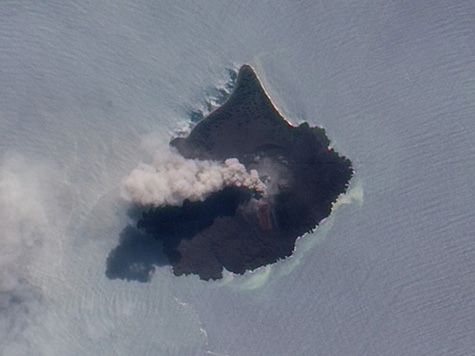
- 11.24.2010
- NASA's EO-1 satellite captured a volcanic plume from Krakatoa on November 17, 2010.
- Source: www.nasa.gov/topics/earth/features/eo1-10th.html
Fire Mountain
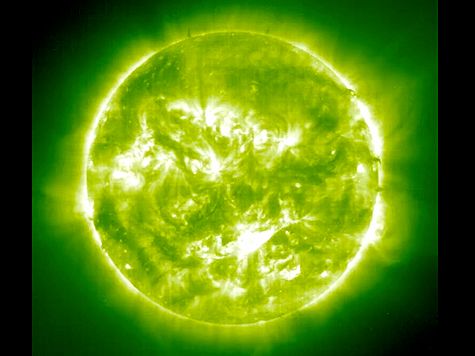
- 11.24.2010
- The Solar and Heliospheric Observatory (SOHO) captured this image of the sun releasing an explosion of plasma -- a coronal mass ejection -- directly from the solar surface toward the
spacecraft.
- Source: www.nasa.gov/topics/solarsystem/sunearthsystem/main/solar-explosions.html
Coming Your Way
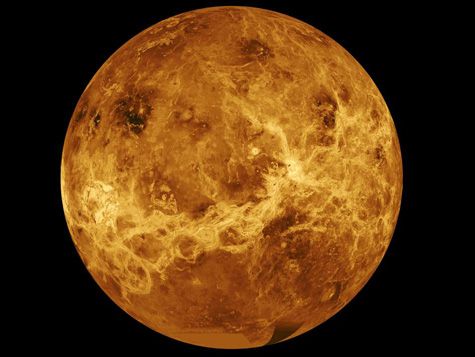
- 11.23.2010
- Synthetic aperture radar from the Magellan space probe, draped over a digital globe, produced this stunning data visualization of the surface of Venus. Source: www.nasa.gov/topics/solarsystem/features/pia00104.html
Magellan's Venus
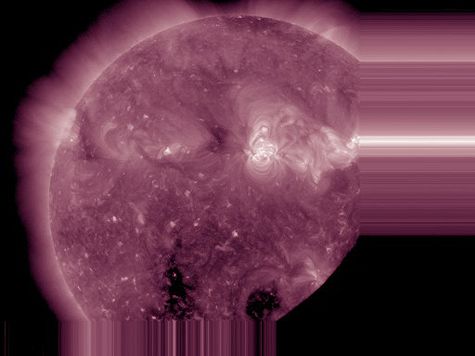
- 11.14.2010
- After maneuvers to calibrate its instruments, the Solar Dynamics Observatory temporarily beamed back surreally distorted images of the sun reminiscent of abstract art.
Source: sdoisgo.blogspot.com/2010/10/maneuvers-and-images.html
Surreal Sun
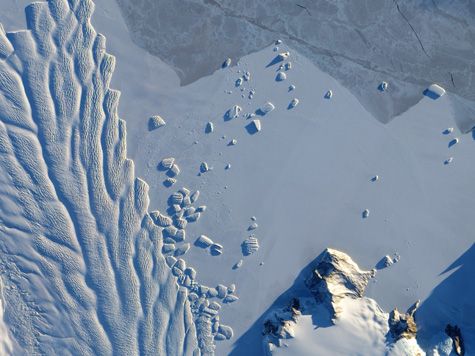
- 11.17.2010
- At the margin of East Antarctica's Matusevich Glacier, the sun casts deep shadows across fragments of a fracturing river of ice. Source: http://earthobservatory.nasa.gov/IOTD/view.php?id=46840
Fractured Glacier
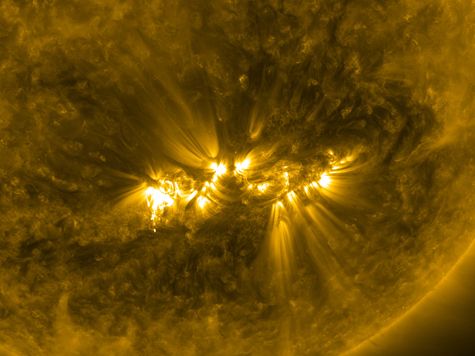
- 11.19.2010
- At the margin of East Antarctica's Matusevich Glacier, the sun casts deep shadows across fragments of a fracturing river of ice. Source: http://earthobservatory.nasa.gov/IOTD/view.php?id=46840
Flashing Flares
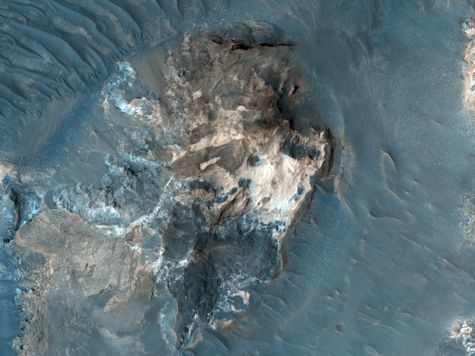
- 11.16.2010
- In the Aureum Chaos region of Mars, bright outcrops and scarps indicate the presence of clay minerals called phyllosilicates, a clue to massive releases of groundwater in the planet's distant past.
Source: http://photojournal.jpl.nasa.gov/catalog/PIA13610
Mars Lite
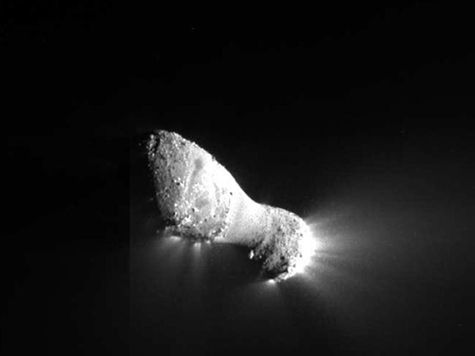
- 11.08.2010
- Comet Hartley 2 can be seen in glorious detail in this image from the NASA EPOXI flyby mission.
Source: www.nasa.gov/mission_pages/epoxi/epoxi-1-20101104.html
Passing By
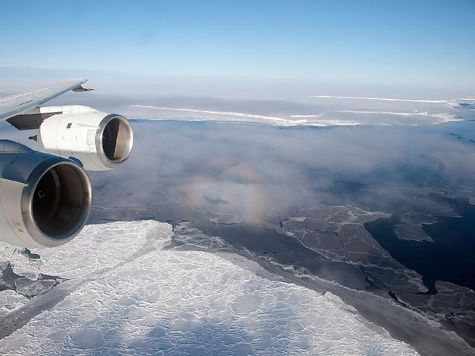
- 11.08.2010
- NASA's DC-8 flew over the Brunt Ice Shelf in Antarctica on Oct. 26, 2010, during the first flight of NASA's Operation IceBridge Antarctic 2010 campaign.
Source: www.nasa.gov/mission_pages/icebridge/multimedia/fall10/DSC_4273_Studinger.html
Over the Shelf:
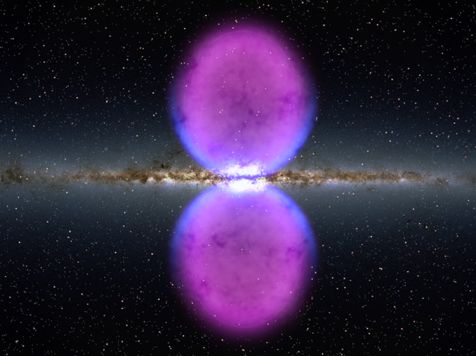
- 11.08.2010
- Using data from NASA's Fermi Gamma-ray Space Telescope, scientists have recently discovered a gigantic, mysterious
structure in our galaxy. This feature looks like a pair of bubbles extending above and below our galaxy's center.
Source: www.nasa.gov/mission_pages/GLAST/news/new-structure.html
Gamma-Ray Bubbles
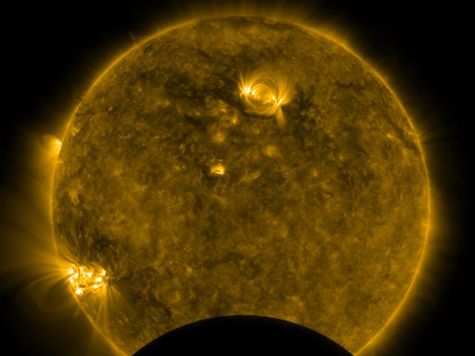
- 11.08.2010
- In this image captured by the Solar Dynamics Observatory, the moon passes in front of, or transits, the sun on November 6 nearly one month after the last
transit on October 7.
Source: sdoisgo.blogspot.com/2010/11/moon-gets-in-way-again.html
Here Comes the Moon Again
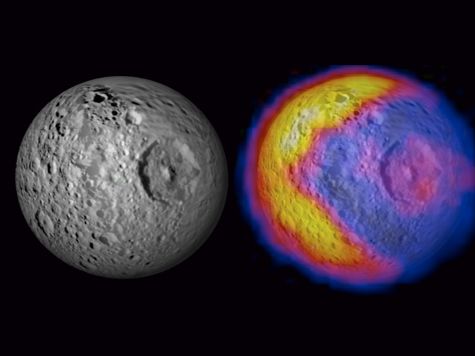
- 11.08.2010
- The left portion of this image shows Mimas in visible light. The right portion shows a temperature map, which resembles 1980s video game icon "Pac
Man."
Source: www.nasa.gov/centers/goddard/news/features/2010/pac-man-mimas.html
Mimas, The Pac Man Moon
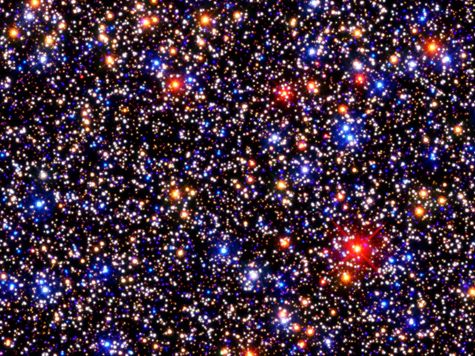
- 11.02.2010
- The Hubble Space Telescope's Wide Field Camera 3 captured this portrait of the central region of the giant globular star cluster Omega Centauri.
Source: hubblesite.org/newscenter/archive/releases/2010/28
Globs of Stars
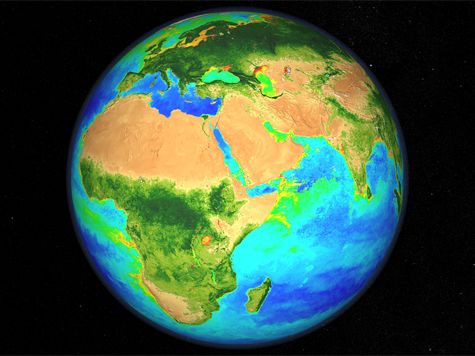
- 11.02.2010
- In this global visualization produced with data collected by NASA's SeaWiFS instrument, dark green on land--and red, yellow, and green on the ocean--show where life is most productive.
Source: oceancolor.gsfc.nasa.gov/SeaWiFS
Earth in Bloom
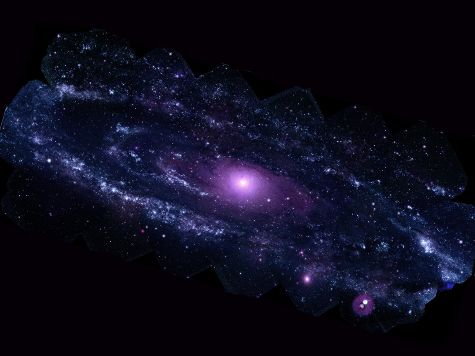
- 11.02.2010
- This mosaic of the Andromeda Galaxy (M31) merges 330 individual images taken by the Ultraviolet/Optical Telescope aboard NASA's Swift spacecraft.
Source: www.nasa.gov/mission_pages/swift/bursts/uv_andromeda.html
Ultraviolet Andromeda
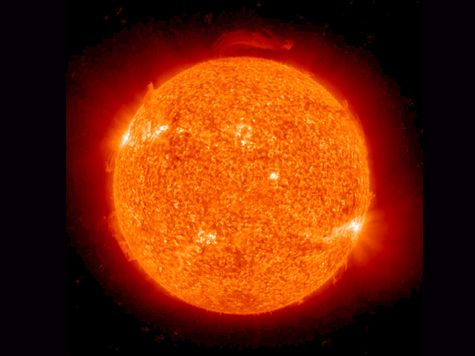
- 11.02.2010
- Pieces of the Sun were flying off into space in different forms from October 25 to 26, 2010, as NASA's STEREO (ahead) spacecraft observed in extreme ultraviolet light.
Source: sohowww.nascom.nasa.gov/pickoftheweek
Popping Off
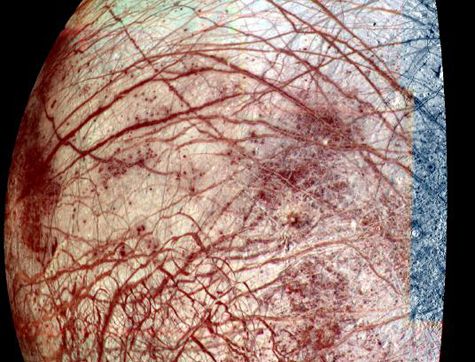
- 11.02.2010
- The icy surface of Europa is shown strewn with cracks, ridges, and "chaotic terrain" where ice blocks have jostled on the disrupted surface.
Source: http://www.nasa.gov/topics/solarsystem/features/europa-ice.html
All Cracked Up
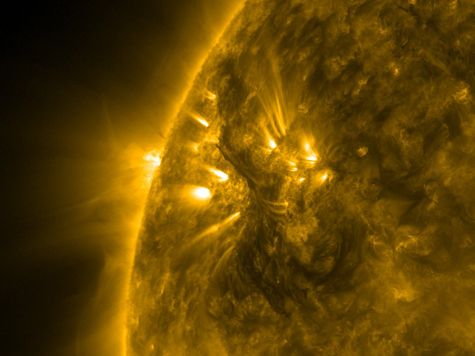
- 10.25.2010
- This Solar Dynamics Observatory close-up of a filament and active region, taken in extreme UV light, shows a dark and elongated filament hovering above the sun's surface on May 18, 2010.
Source: sdo.gsfc.nasa.gov/gallery/potw.php?v=item&id=1
Dark Filament
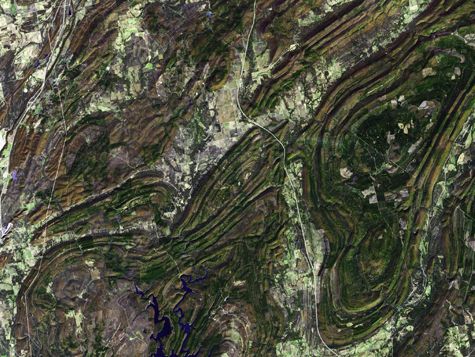
- 10.25.2010
- ASTER, one of five Earth-observing instruments launched aboard NASA's Terra satellite, captured this image of the Ouachita Mountains in southeastern Oklahoma. These 'fold mountains' formed about
300 million years ago.
Source: www.nasa.gov/multimedia/imagegallery/image_feature_1784.html
Folded Mountains
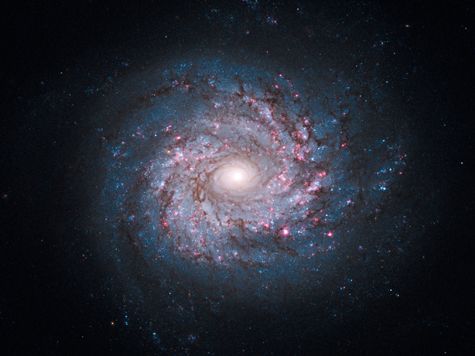
- 10.25.2010
- This face-on image of the spiral galaxy NGC 3982 reveals a rich tapestry of star birth along with its winding arms, marked by pink regions of glowing hydrogen, newborn blue star clusters, and
obscuring dust lanes.
Source: hubblesite.org/newscenter/archive/releases/2010/36/
Pinwheel of Star Birth
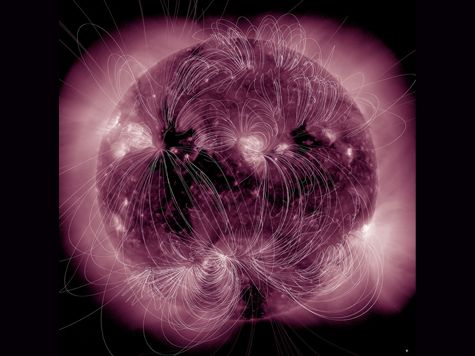
- 10.25.2010
- The illustration maps the magnetic field lines emanating from the sun and their interactions superimposed on an extreme ultraviolet image from the Solar Dynamics Observatory on October 20, 2010.
Source: sdo.gsfc.nasa.gov/gallery/potw.php?v=item&id=28
Magnetic Field Lines Galore
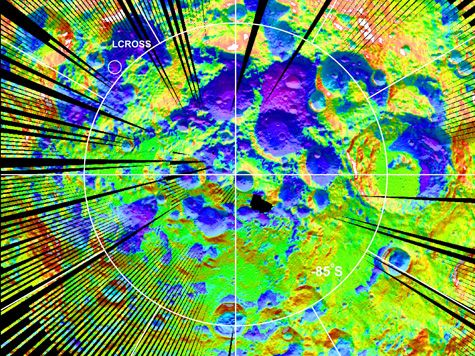
- 10.25.2010
- The Lunar Reconnaissance Orbiter's Diviner instrument created this temperature map of the moon's south polar region. It reveals intensely cold impact craters that are potential cold traps for water
ice and other icy compounds.
Source: www.nasa.gov/mission_pages/LRO/news/lro-lcross-impact.html
Lunar Cold Traps
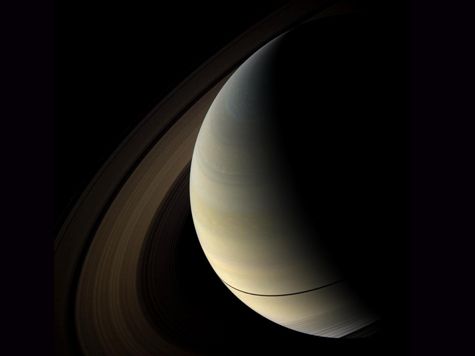
- 10.18.2010
- The shadows of Saturn's rings cast onto the planet appear as a thin band at the equator in this image captured by the Cassini spacecraft as the planet approached its August 2009 equinox.
Source: photojournal.jpl.nasa.gov/catalog/PIA12708
Shadowy Equinox
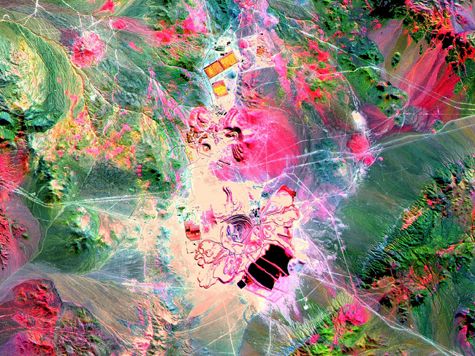
- 10.18.2010
- NASA's Terra satellite captured this image of the Escondida open-pit mine in Chile's Atacama Desert. The image highlights the different rock types present on the surface and the land changes
caused by mining.
Source: www.nasa.gov/multimedia/imagegallery/image_feature_681.html
Mining From Space:
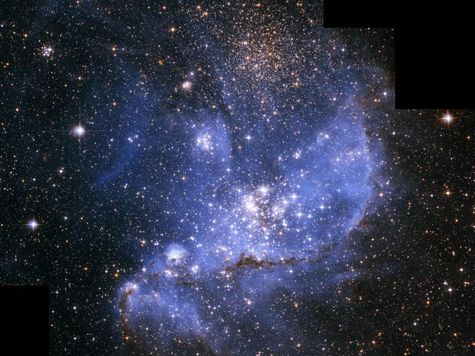
- 10.18.2010
- NGC 346 is a star-forming region about 200 light-years across, pictured above by the Hubble Space Telescope.
Source: hubblesite.org/newscenter/archive/releases/2005/04/image/a/
Where Stars Are Born
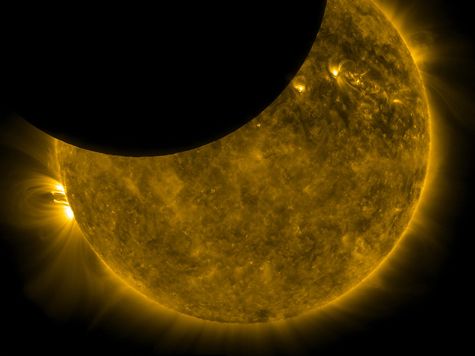
- 10.18.2010
- On October 7, 2010, the Solar Dynamics Observatory observed its first lunar transit when the moon passed between the spacecraft and the sun.
Source: sdo.gsfc.nasa.gov/gallery/potw.php?v=item&id=27
Space Eclipse
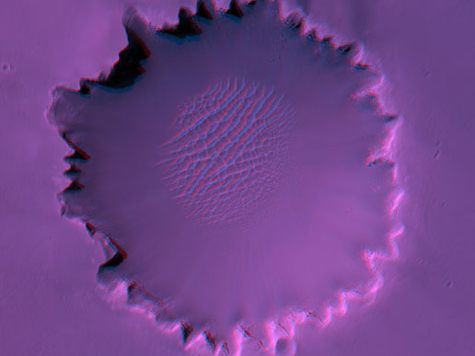
- 10.18.2010
- This stereo view of Victoria Crater on Mars combines two of the three images taken by the HiRISE camera on NASA's Mars Reconnaissance Orbiter.
Source: www.nasa.gov/multimedia/imagegallery/image_feature_711.html
Seeing Double:
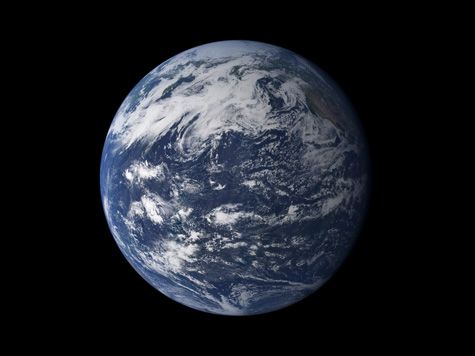
- 10.12.2010
- Viewed from space, the most striking feature of our planet is the water. In both liquid and frozen form, it covers 75 percent of Earth's surface.
Source: www.flickr.com/photos/gsfc/5063392410/#
Water World
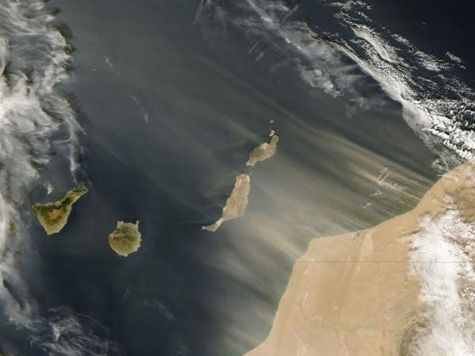
- 10.12.2010
- Desert dust blows off the west coast of Africa and over the Canary Islands in this image from the MODIS instrument on NASA's Terra satellite.
Source: http://www.nasa.gov/topics/earth/features/modis-dust.html
Saharan Dust
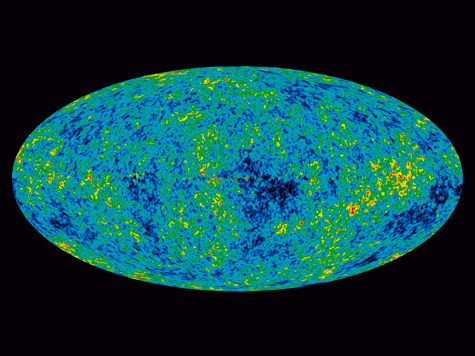
- 10.12.2010
- This image is the detailed, all-sky picture of the infant universe created from seven years of data from the Wilkinson Microwave Anisotropy Probe (WMAP).
Source: www.nasa.gov/topics/universe/features/wmap-complete.html
Big Bang Glow

- 10.12.2010
- This eruptive prominence lifted off the sun on September 15, 2010. The images, captured by the Solar Dynamics Observatory, show off the strands of superheated gas, or plasma, within the prominence
in exquisite detail.
Source: sdo.gsfc.nasa.gov/gallery/potw.php?v=item&id=26
Lift Off!
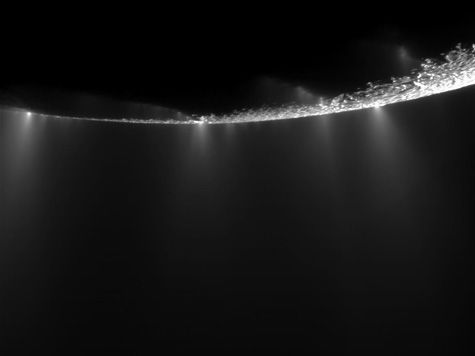
- 10.12.2010
- Dramatic plumes on the saturnian satellite Enceladus spray water ice out from many locations along the famed "tiger stripes" near the moon's south pole.
Source: www.nasa.gov/mission_pages/cassini/whycassini/cassini20100708-b.html
Moon Plumes
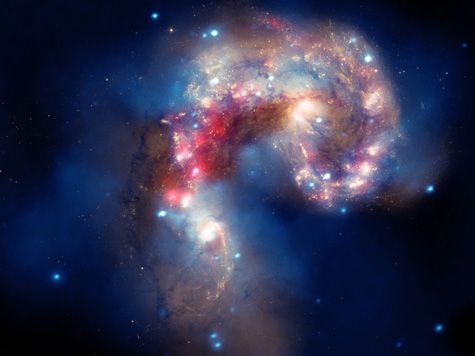
- 10.04.2010
- Observations from three of NASA's Great Observatories -- Hubble, Chandra, and Spitzer -- were combined to make this portrait of the colliding Antennae Galaxies.
Source: hubblesite.org/newscenter/archive/releases/2010/25/image/a
Colliding Star Cities
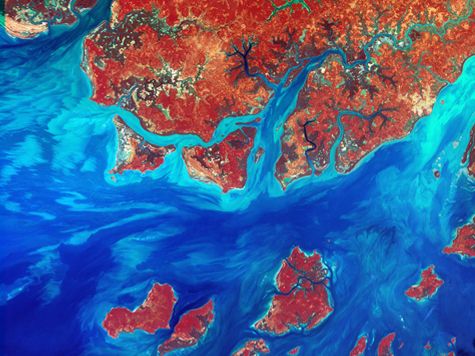
- 10.04.2010
- This Landsat 7 image of Guinea-Bissau, West Africa, shows the complex patterns of the country's silt-laden coastal waters.
Source: www.flickr.com/photos/gsfc/4404817866/in/set-72157623424324229
Colorful Coastline
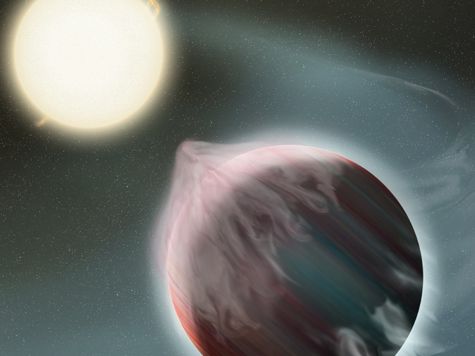
- 10.04.2010
- In this artist's concept, a star begins to consume a "hot Jupiter" orbiting a bit too close for comfort.
Source: www.nasa.gov/topics/universe/features/early-exit.html
Planet Eater
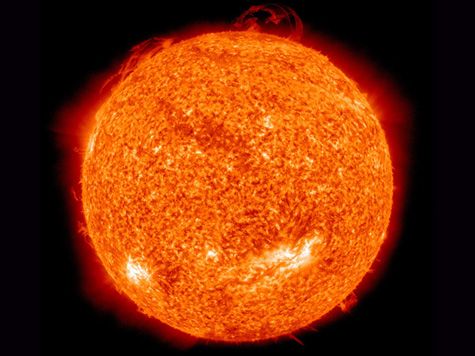
- 10.04.2010
- Twisting strands of plasma dance at the sun's edges in this Solar Dynamics Observatory image captured in extreme ultraviolet light September 18-22, 2010.
Source: sdo.gsfc.nasa.gov/gallery/potw.php?v=item&id=25
A Swirling Maelstrom
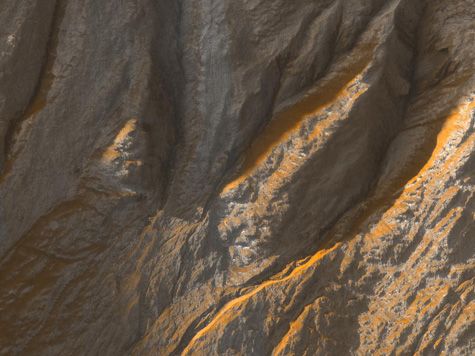
- 10.04.2010
- This enhanced-color view, taken by the Mars Reconnaissance Orbiter in 2006, shows gullies in the Terra Sirenum region.
Source: www.nasa.gov/multimedia/imagegallery/image_feature_692.html
Martian Gullies
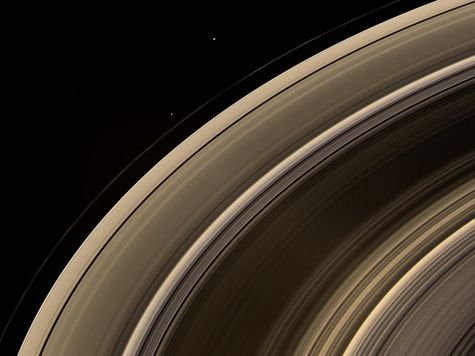
- 09.28.2010
- This Cassini orbiter view of Saturn looks toward the unilluminated side of the rings from about 40 degrees above the ring plane. Combining images taken using red, green and blue filters created
this natural color view.
Source: photojournal.jpl.nasa.gov/catalog/PIA09865
Grandeur of the Rings
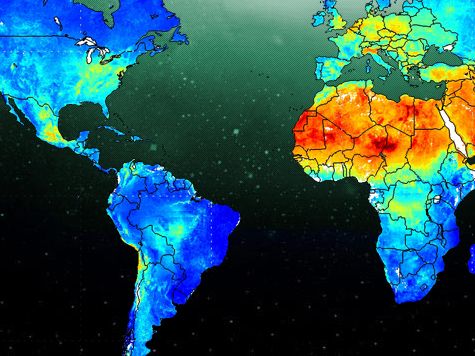
- 09.28.2010
- Scientists used NASA satellite data to produce a global map of a type of airborne particle, called PM 2.5, that may contribute to millions of premature deaths each year.
Source: www.nasa.gov/topics/earth/features/health-sapping.html
Pollution Mapping
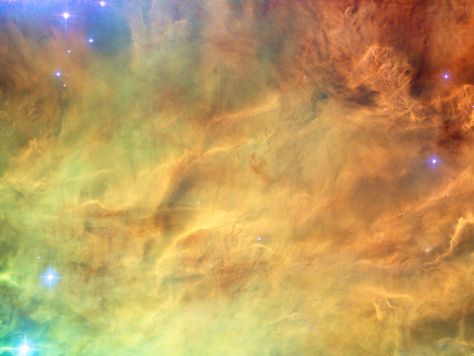
- 09.28.2010
- A spectacular Hubble Space Telescope image reveals the dusty glowing heart of the Lagoon Nebula.
Source: www.flickr.com/photos/gsfc/5014452663/in/set-72157623410904809
Dusty Heart
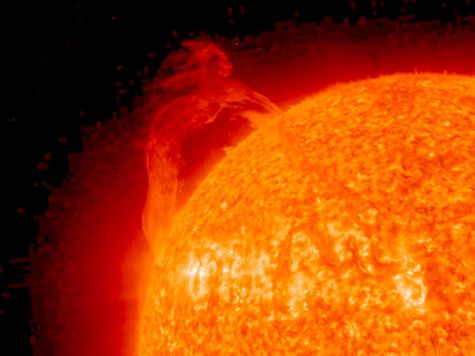
- 09.28.2010
- The STEREO (Ahead) spacecraft watched as an eruptive prominence near the back of the Sun arched up but then headed back to the Sun's surface over a few hours.
Source: sohowww.nascom.nasa.gov/pickoftheweek
Arch To Nowhere
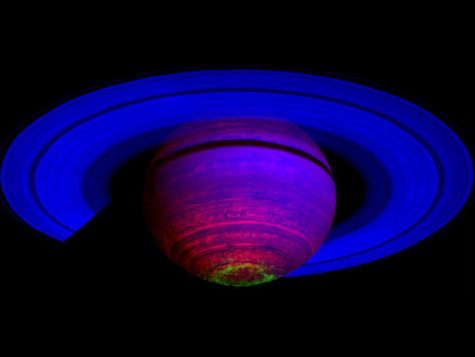
- 09.28.2010
- This false-color composite image shows the glow of auroras streaking out about 1,000 kilometers (600 miles) from the cloud tops of Saturn's south polar region.
Source: www.nasa.gov/mission_pages/cassini/multimedia/pia13402.html
Saturn's Sizzle
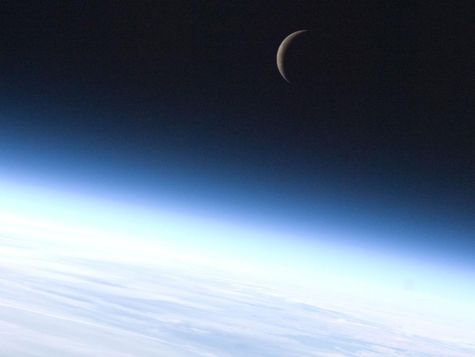
- 09.20.2010
- A last quarter crescent moon shines above Earth's horizon in this portrait by the Expedition 24 crew on the International Space Station.
Source: www.nasa.gov/multimedia/imagegallery/image_feature_1762.html
Crescent Moon
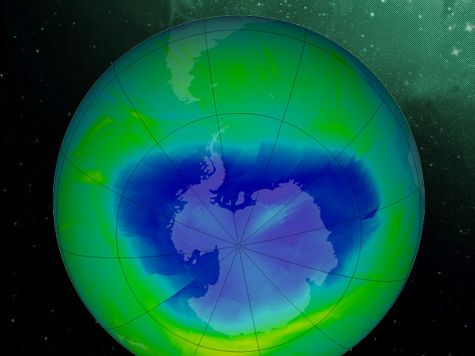
- 09.20.2010
- NASA's Aura satellite acquired data on September 12 for this map of ozone concentrations over Antarctica. The "hole" in the ozone layer typically reaches its maximum area in late September
or
early October.
Source: www.nasa.gov/topics/earth/features/ozone0910.html
Antarctic Ozone
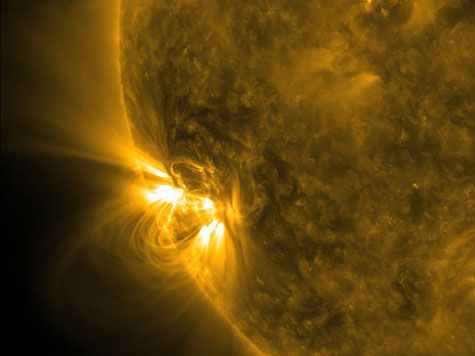
- 09.20.2010
- The Solar Dynamics Observatory watched as an active region in the sun's southern hemisphere produced a series of looping arcs of plasma on September 11 to 13.
Source: www.nasa.gov/multimedia/videogallery/index.html?collection_id=13587&media_id=18407351
The Sun Gets Loopy
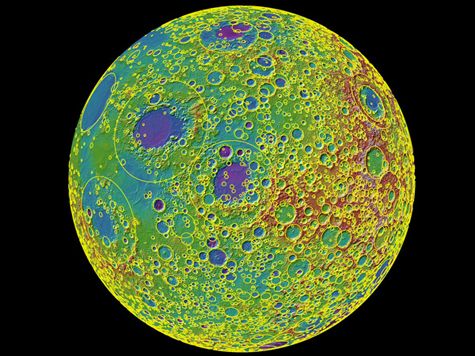
- 09.20.2010
- In this topographic map created with data from the LOLA instrument on the Lunar Reconnaissance Orbiter, yellow circles indicate some of the thousands of lunar craters counted in a recent
study.
Source: www.nasa.gov/mission_pages/LRO/news/turbulent-youth.html
Counting Craters
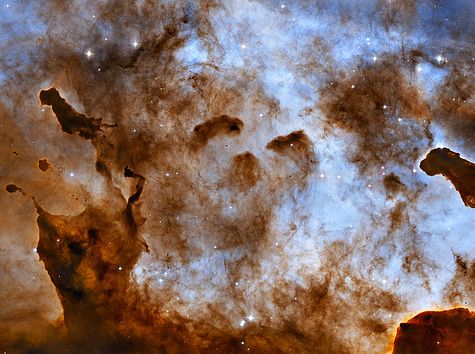
- 09.20.2010
- These one-light-year-tall pillars of cold hydrogen and dust, imaged by the Hubble Space Telescope, are located in the Carina Nebula.
Source: hubblesite.org/newscenter/archive/releases/2010/29/image/a
Cosmic Ice Sculpture
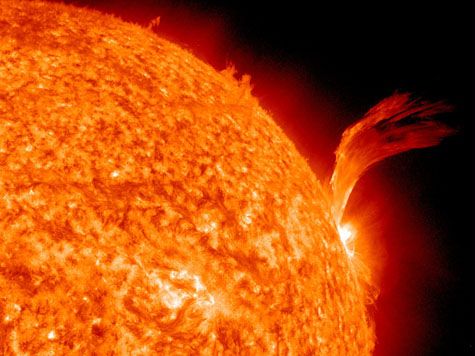
- 09.15.2010
- Just as sunspot 1105 was turning away from Earth on September 8, the active region erupted, producing a solar flare and a fantastic prominence.
Source: www.flickr.com/photos/gsfc/4975115754
Solar Surprise
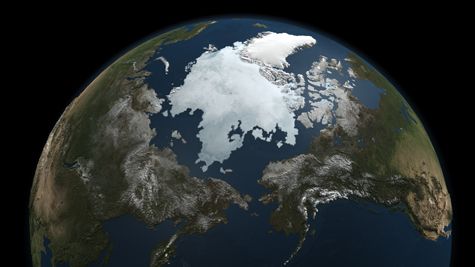
- 09.14.2010
- Sea ice grows each winter and shrinks each summer, reaching its yearly minimum size each fall. NASA's Aqua satellite captured this snapshot on September 3.
Source: www.nasa.gov/topics/earth/features/ice-min-approach.html
Arctic Ice

- 09.13.2010
- The Lunar Reconnaissance Orbiter's LOLA instrument captured this portrait of the moon's south polar region. It features the Aitken Basin, the largest impact structure on the moon.
Source: www.nasa.gov/mission_pages/LRO/multimedia/lroimages/lola-20100409-aitken.html
Biggest basin
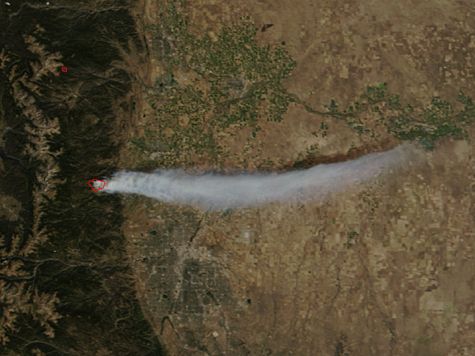
- 09.08.2010
- The MODIS instrument on NASA's Terra satellite imaged the Fourmile Canyon Fire west of Boulder, Colorado. The blaze broke out around 10 a.m. on September 6.
Source: earthobservatory.nasa.gov/IOTD/view.php?id=45675
Boulder Blaze
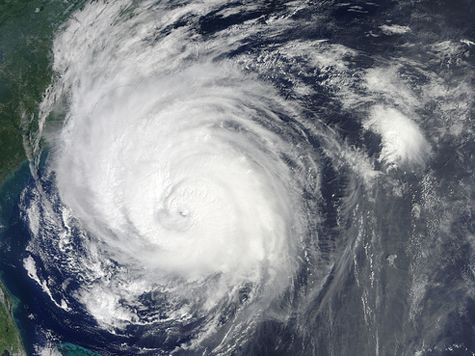
- 09.07.2010
-
In this image captured by NASA's Terra satellite on Thursday September 2, Hurricane Earl scuds along the North Carolina coast. Earl weakened to a tropical storm the next day.
Source: http://www.flickr.com/photos/gsfc/4954583979/#"
Earl's Whirl
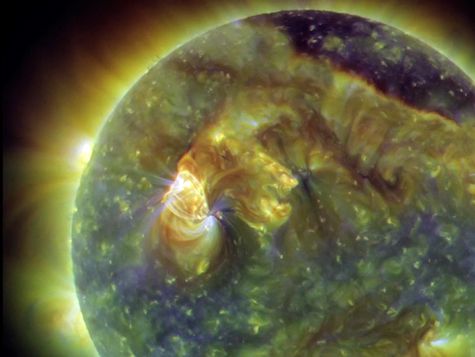
- 09.07.2010
-
An image captured by the Solar Dynamics Observatory in three bands of ultraviolet light shows bright active regions on the sun's surface.
Source: sdo.gsfc.nasa.gov/gallery/main.php?v=item&id=28
Extreme Trio
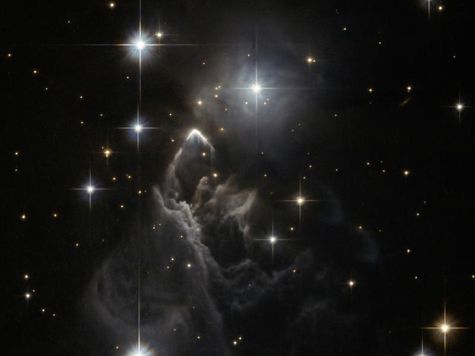
- 09.07.2010
-
A spectacular image by the Hubble Space Telescope reveals new details in IRAS 05437+2502, a floating mountain of interstellar dust in the constellation Taurus. Exactly what illuminates the cloud
remains uncertain.
Source: http://www.nasa.gov/multimedia/imagegallery/image_feature_1741.html
Into the night
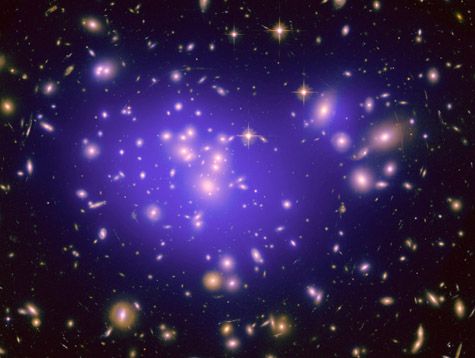
- 08.24.2010
-
In an image based on Hubble Space Telescope observations, ghostly "dark matter" is indicated by the blue cloud within a galaxy cluster.
Source: http://hubblesite.org/newscenter/archive/releases/2010/26/image/a/
Dark Mapping
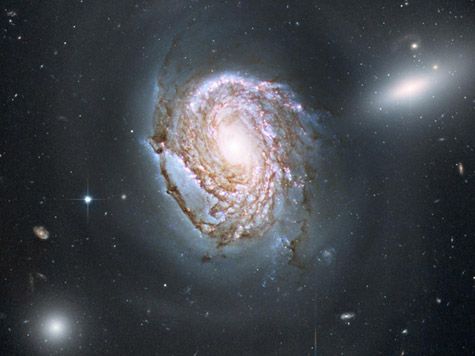
- 08.11.2010
-
A long-exposure Hubble Space Telescope image shows a majestic face-on spiral galaxy located deep within the Coma Cluster of galaxies.
Source: http://www.nasa.gov/mission_pages/hubble/science/island-universe.html
An Island Universe
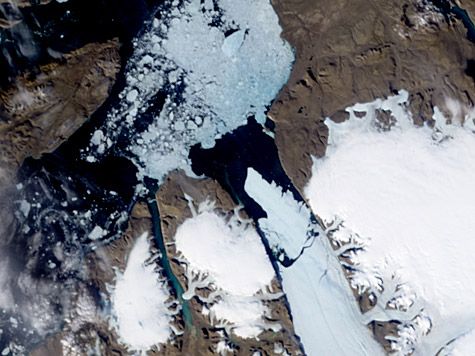
- 08.11.2010
-
A chunk of ice some 97 square miles in size broke off Greenland's Petermann Glacier on August 5. The resulting iceberg is the Arctic's largest since 1962.
Source: http://www.nasa.gov/topics/earth/features/petermann-calve.html
Ice Calves From Greenland Glacier
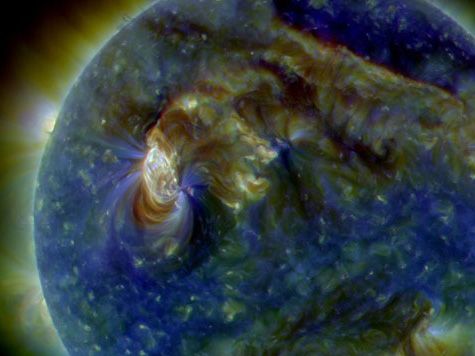
- 08.11.2010
-
On August 1, powerful disturbances on the sun's surface culminated in brilliant auroral displays above Earth several days later. The Solar Dynamics Observatory saw it happen.
Source: http://www.nasa.gov/topics/solarsystem/sunearthsystem/main/News080510-cme.html
Solar Storm Warning!
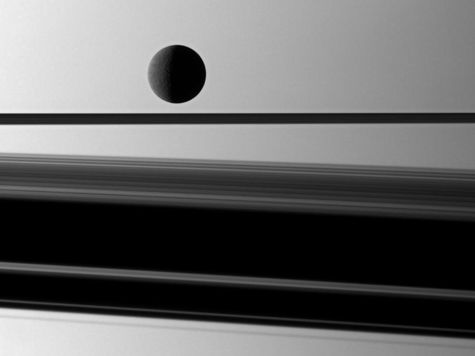
- 08.11.2010
-
In a scene reminiscent of an abstract painting, Saturn's moon Rhea is gently lit in front of the wide shadow cast by the rings.
Source: http://photojournal.jpl.nasa.gov/catalog/PIA12696
Planet or Painting?
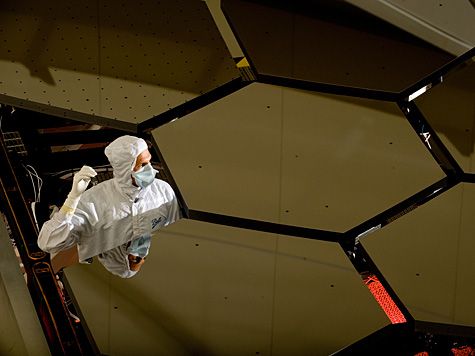
- 08.11.2010
-
The James Webb Space Telescope's mirrors are chilled to -415 degrees Fahrenheit to measure how much the they will change in the frigid space environment.
Source: http://www.nasa.gov/centers/marshall/multimedia/photos/2010/photos10-094.html
